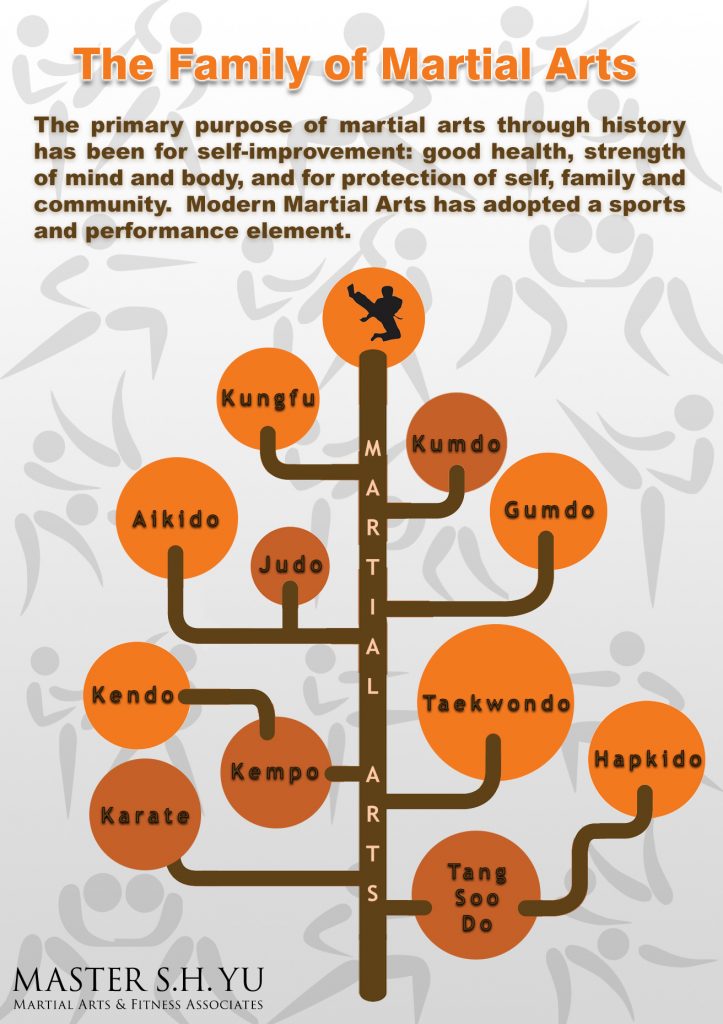Introducing The Range Of Martial Arts Disciplines: A Guide From Martial Arts To Taekwondo
Introducing The Range Of Martial Arts Disciplines: A Guide From Martial Arts To Taekwondo
Blog Article
Article Developed By-Faber Husum
Are you tired of feeling overwhelmed by the large globe of fighting styles? With aikido classes for adults near me to pick from, it can be simple to obtain shed in a sea of strikes, kicks, and mysterious names. Yet worry not!
This conversation will demystify the various martial arts styles, taking you on a trip from the powerful strikes of Martial arts to the dynamic kicks of Taekwondo. Get ready to reveal the beginnings, methods, and viewpoints behind these ancient art types.
So, tighten https://www.pastemagazine.com/movies/martial-arts/the-100-best-martial-arts-movies-of-all-time and prepare to start an informing exploration into the fascinating world of fighting styles.
Origins of Martial Arts Styles
The origins of fighting styles styles can be traced back to old human beings and their need for self-defense and combat strategies. Throughout background, different cultures established their own unique approaches of combating, each with its own set of strategies and philosophies.
In China, for example, martial arts designs such as Martial art and Tai Chi were developed as a means of protection and improving physical and mental wellness.
In Japan, the samurai warriors created designs like Martial arts and Judo, concentrating on technique, accuracy, and mastery of the body.
Similarly, in Korea, Taekwondo became a fighting style emphasizing high kicks, rapid activities, and psychological fortitude.
These early civilizations laid the structure for the diverse range of martial arts styles that exist today, each with its own rich history and cultural value.
Methods and Training Approaches
To understand fighting styles styles, professionals must discover different strategies and training approaches.
Strategies are the specific movements and actions used in battle, such as punches, kicks, throws, and blocks. Various martial arts designs have their very own unique set of methods that professionals need to master via extensive training.
Training methods differ relying on the design, however they usually involve a combination of physical conditioning, drills, competing, and types.
Physical conditioning is important to build toughness, versatility, and endurance. Drills help practitioners refine their techniques and improve their speed and accuracy.
Sparring enables practitioners to practice their strategies in a regulated, realistic atmosphere. Forms, also called kata, are ironclad series of movements that aid specialists establish muscle mass memory and emphasis.
Philosophies and Concepts
Checking out the philosophies and concepts of fighting styles designs can provide you with a much deeper understanding of your chosen self-control. Each fighting style has its very own distinct ideology and collection of directing principles that shape the way it's practiced.
For chinese martial arts movies , Martial arts stresses technique, regard, and self-control. It shows professionals to concentrate their body and minds, enabling them to safeguard themselves while keeping a feeling of inner tranquility.
On the other hand, Taekwondo places a solid focus on speed, agility, and versatility. Its principles are rooted in the tenets of courtesy, integrity, determination, self-control, and resolute spirit.
Conclusion
Now that you have actually checked out the origins, methods, and philosophies of different fighting styles styles, you have a much deeper understanding of these old self-controls.
Think of https://emilioqajsb.ourcodeblog.com/33394819/getting-understanding-about-the-cognitive-and-affective-growth-in-young-martial-artists , exercising with steady resolution and focus, appearing boards with an effective strike.
Their trip showcases the devotion and stamina required to master a martial art, reminding us that with technique and perseverance, anything is possible.
